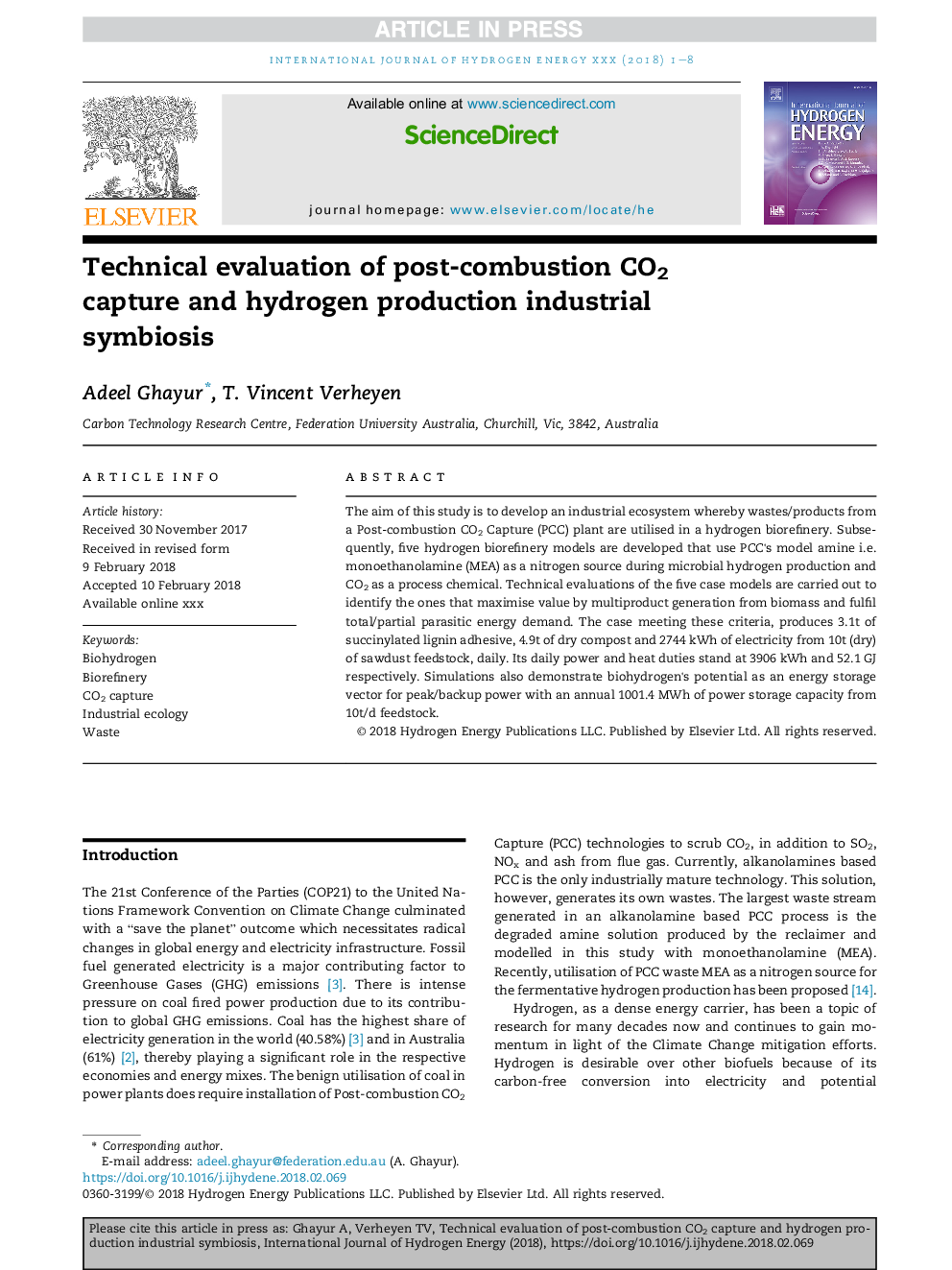| Article ID | Journal | Published Year | Pages | File Type |
|---|---|---|---|---|
| 7705334 | International Journal of Hydrogen Energy | 2018 | 8 Pages |
Abstract
The aim of this study is to develop an industrial ecosystem whereby wastes/products from a Post-combustion CO2 Capture (PCC) plant are utilised in a hydrogen biorefinery. Subsequently, five hydrogen biorefinery models are developed that use PCC's model amine i.e. monoethanolamine (MEA) as a nitrogen source during microbial hydrogen production and CO2 as a process chemical. Technical evaluations of the five case models are carried out to identify the ones that maximise value by multiproduct generation from biomass and fulfil total/partial parasitic energy demand. The case meeting these criteria, produces 3.1t of succinylated lignin adhesive, 4.9t of dry compost and 2744Â kWh of electricity from 10t (dry) of sawdust feedstock, daily. Its daily power and heat duties stand at 3906Â kWh and 52.1Â GJ respectively. Simulations also demonstrate biohydrogen's potential as an energy storage vector for peak/backup power with an annual 1001.4Â MWh of power storage capacity from 10t/d feedstock.
Related Topics
Physical Sciences and Engineering
Chemistry
Electrochemistry
Authors
Adeel Ghayur, T. Vincent Verheyen,
